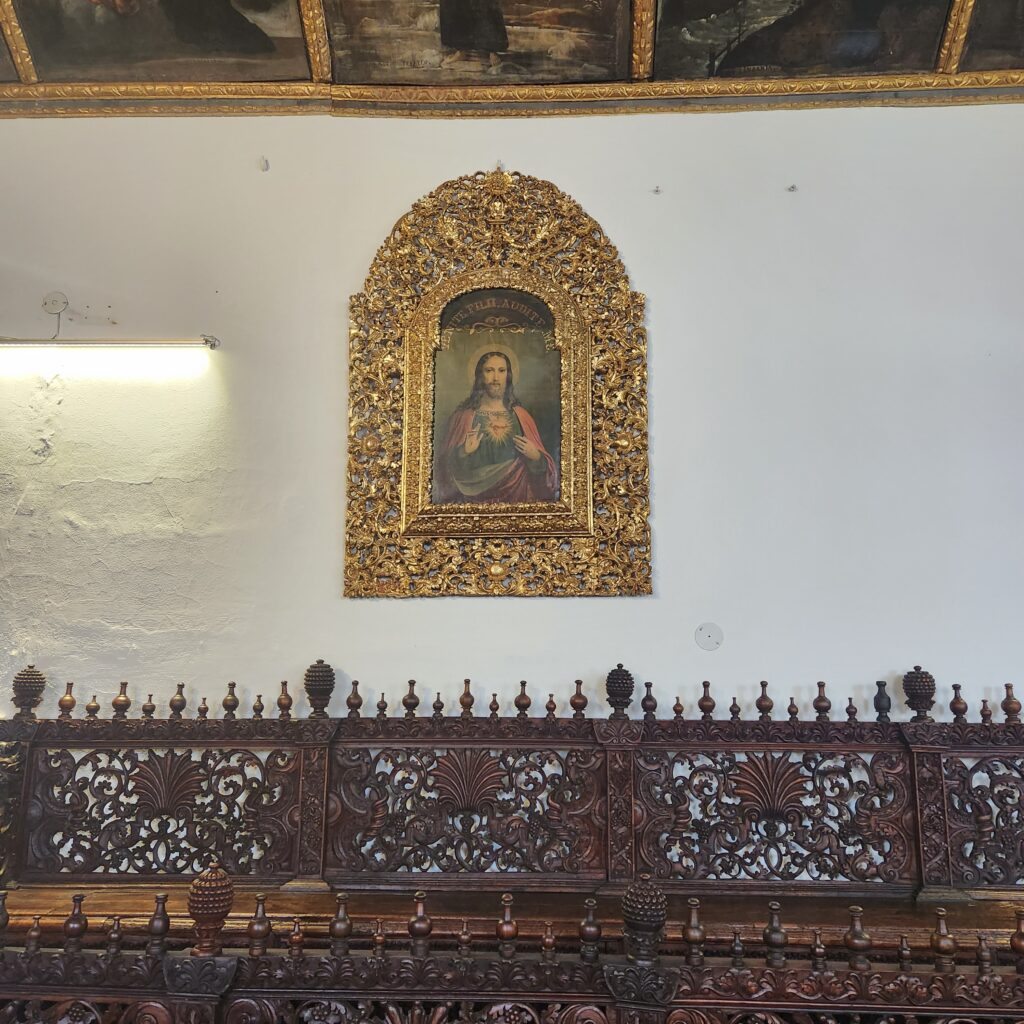La Sala Capitular, construida entre 1741 y 1761, fue la antigua Aula Magna de la Universidad de San Fulgencio y escenario de hechos clave en la historia del Ecuador. Allí se ratificó la proclama del 10 de agosto de 1809 y se recordaron los próceres caídos en la masacre del 2 de agosto de 1810. Sus placas conmemorativas y su papel como lugar donde reposaron los restos de patriotas refuerzan su enorme valor histórico.
El espacio, de grandes dimensiones, destaca por su riqueza artística: un artesonado con diseños geométricos, lienzos religiosos, sillería y tribuna talladas en madera con pan de oro. En el extremo opuesto, un retablo barroco churrigueresco alberga la escultura del Calvario, obra del maestro José Olmos “Pampite”. Todo el conjunto combina arte, historia y espiritualidad, convirtiendo a la sala en un símbolo cultural y patrimonial de Quito.

The Convent of San Agustín houses a valuable art gallery, featuring works by the Quito master Miguel de Santiago, one of the leading representatives of the Quito School. His paintings, commissioned by Father Basilio de Ribera in the 17th century, narrate the life and miracles of Saint Augustine and decorate the cloister walls with great artistic richness, framed by gilded carvings and sumptuous ornamentation.
Although part of the collection has been lost or damaged, numerous pieces by Santiago are still preserved, along with works by other artists such as Manosalvas, Luis Cadena, and Antonio Salas. These paintings depict religious themes that exalt the Augustinian faith, turning the convent into a living museum that reflects the evolution of colonial and republican art in Quito.
